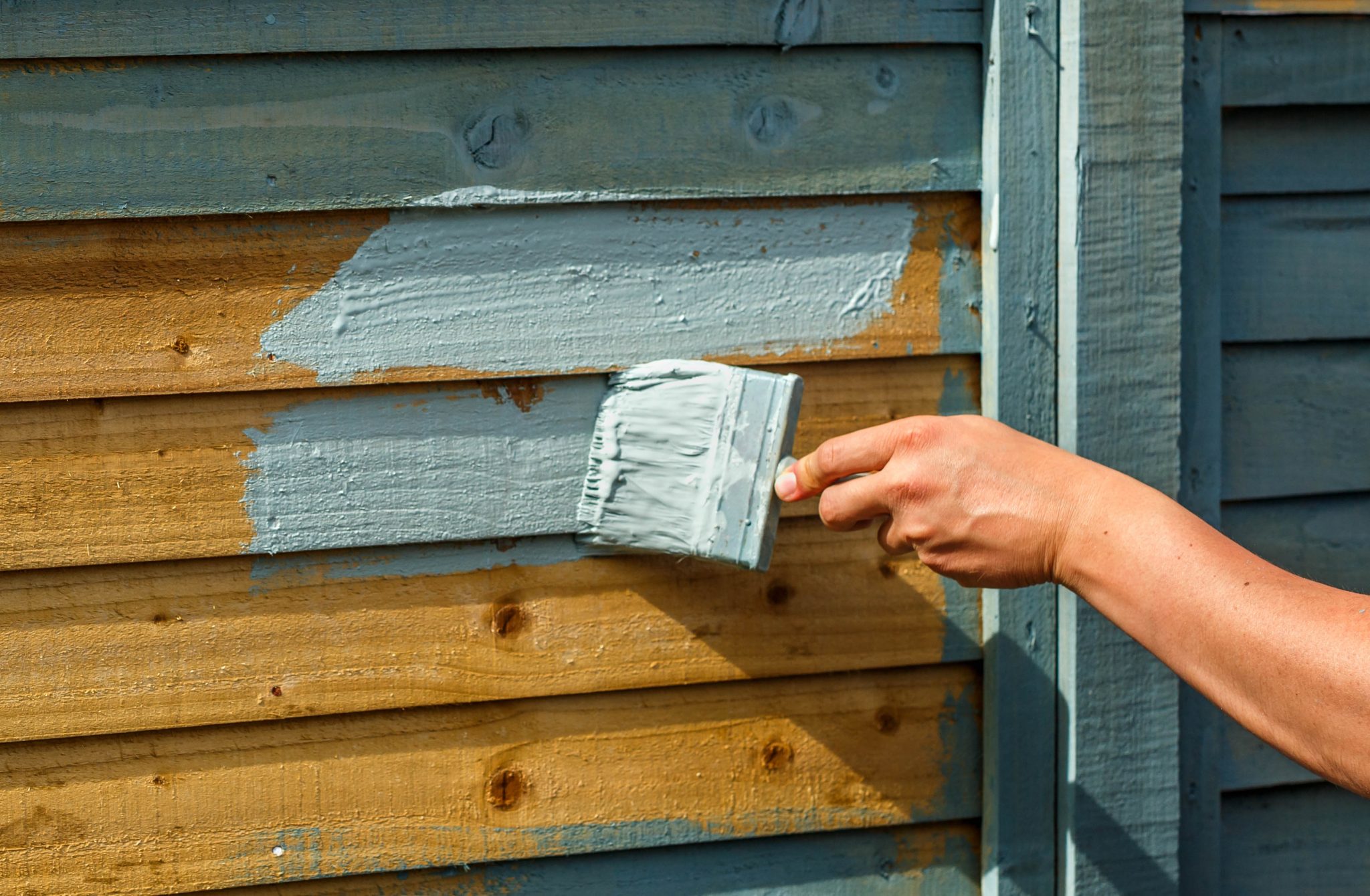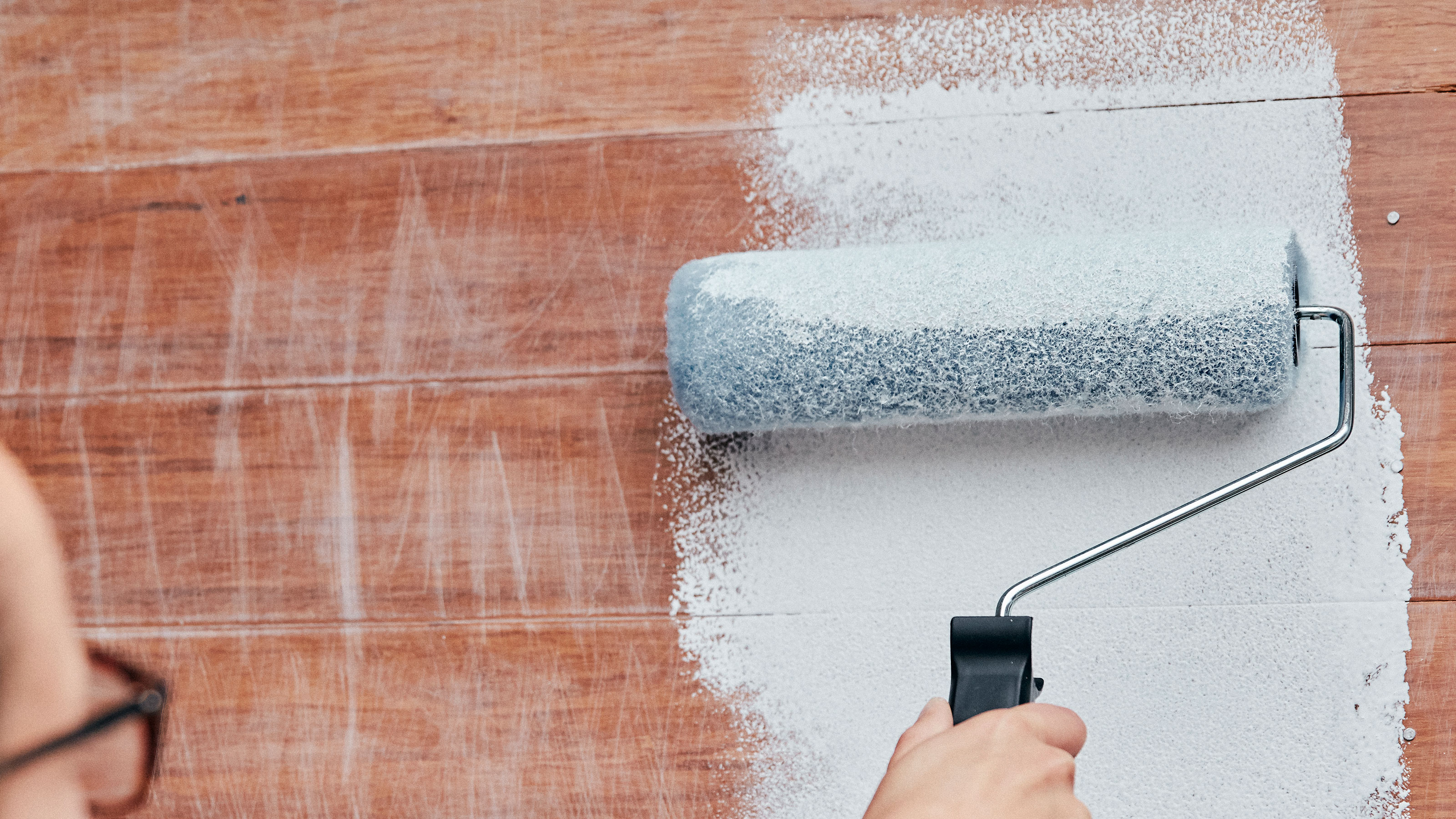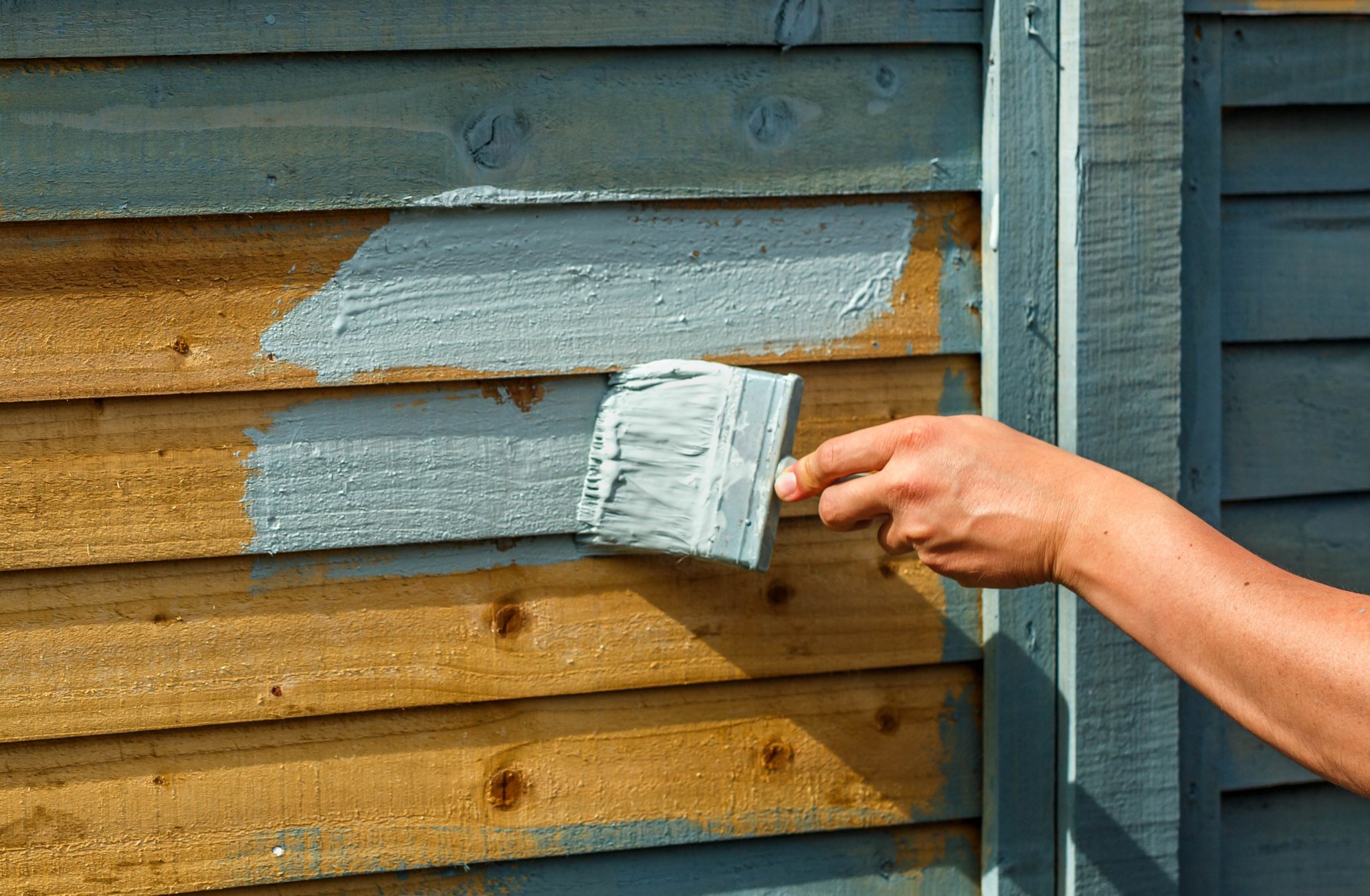Did you ever wonder if you can use masonry paint on woodwork? Well, you’re in the right place to find out! Painting your woodwork can freshen up the look of your home, and it’s important to use the right type of paint for the job.
Using masonry paint on woodwork might not be the best idea. Masonry paint is specially formulated for concrete or brick surfaces, so it may not adhere properly to wood. Plus, masonry paint tends to be thicker and less flexible, which can lead to cracking and peeling on wood surfaces.
But don’t worry, there are plenty of paints specifically designed for woodwork that will give you a beautiful and long-lasting finish. So, let’s dive in and explore the world of woodwork paints together!
Masonry paint is specifically designed for exterior masonry surfaces such as concrete and brick. While it can adhere to wood, it may not provide the same durability and finish as paint formulated for wood surfaces. For optimal results on woodwork, it’s recommended to use paint specifically designed for wood, such as acrylic or oil-based paints. These types of paint will adhere better to wood, provide better coverage, and offer greater protection against weathering and wear.

Can I Use Masonry Paint on Woodwork?
When it comes to painting woodwork, many people wonder if they can use masonry paint. Masonry paint is typically designed for use on exterior surfaces such as concrete, brick, and stucco. However, there are certain circumstances where using masonry paint on woodwork can be a viable option. In this article, we will explore the pros and cons of using masonry paint on woodwork, as well as provide tips and considerations to help you make an informed decision.
Understanding Masonry Paint
Masonry paint is specifically formulated to provide a durable and weather-resistant finish on surfaces like concrete and brick. It is designed to withstand harsh weather conditions, UV rays, and moisture. Masonry paint typically has a thick consistency, which helps it adhere to rough surfaces. It also provides excellent coverage and color retention. While masonry paint is primarily used for exterior applications, it can sometimes be used on interior surfaces depending on the specific requirements and desired aesthetic.
Benefits of Using Masonry Paint on Woodwork
1. Durability: One of the main advantages of using masonry paint on woodwork is its durability. Masonry paint is formulated to withstand the elements, making it more resistant to wear and tear than regular interior paint.
2. Weather Resistance: If you have woodwork in an area that is exposed to extreme weather conditions, using masonry paint can provide an added layer of protection. It can help prevent moisture penetration and damage from UV rays.
3. Versatility: Masonry paint comes in a wide range of colors and finishes, allowing you to achieve the desired look for your woodwork. Whether you prefer a glossy or matte finish, there are options available to suit your preference.
Considerations When Using Masonry Paint on Woodwork
1. Surface Preparation: Proper surface preparation is crucial when using masonry paint on woodwork. Make sure the wood surface is clean, dry, and free of any loose paint or debris. Sanding the wood beforehand can help create a smoother surface for better paint adhesion.
2. Primer: Applying a suitable primer before using masonry paint on wood can improve adhesion and ensure a more even finish. Choose a primer that is specifically formulated for use on wood surfaces to achieve optimal results.
3. Testing: Before applying masonry paint to a large area of woodwork, it is recommended to conduct a small test on a discreet area to see how the paint adheres and dries. This will help you assess the suitability of masonry paint for your specific woodwork project.
Alternatives to Masonry Paint for Woodwork
If you’re unsure about using masonry paint on woodwork or if it doesn’t meet your specific needs, there are alternative paint options available:
1. Interior Paint: Interior paints are specifically formulated for use on indoor surfaces, including woodwork. They come in a variety of finishes and provide a smooth and durable finish.
2. Exterior Paint: Exterior paints are designed to withstand harsh weather conditions and are suitable for use on woodwork that is exposed to the elements. They offer excellent protection and durability.
3. Enamel Paint: Enamel paints provide a hard and glossy finish, making them a popular choice for woodwork. They offer durability and can be used for both interior and exterior applications.
Tips for a Successful Woodwork Painting Project
1. Properly prepare the wood surface by cleaning, sanding, and priming it before applying paint.
2. Choose high-quality paint and tools to ensure a professional-looking finish.
3. Apply thin and even coats of paint, allowing sufficient drying time between each coat.
4. Use a brush or roller appropriate for the type of paint you are using.
5. Consider using painter’s tape to create clean edges and protect surfaces that should not be painted.
6. Follow the manufacturer’s instructions regarding drying time and application techniques.
7. Regularly maintain and touch up painted woodwork to prolong its life and appearance.
Conclusion
While it is possible to use masonry paint on woodwork in certain circumstances, it is important to consider the specific requirements and limitations of both the paint and the wood surface. Proper preparation, including cleaning, sanding, and priming, is crucial for achieving a successful result. Additionally, testing the paint on a small area beforehand can help assess its suitability. If masonry paint does not meet your needs or requirements, there are alternative paint options available specifically formulated for use on woodwork. By following proper techniques and using high-quality materials, you can achieve a durable and aesthetically pleasing finish on your woodwork.
Key Takeaways: Can I Use Masonry Paint on Woodwork?
- Masonry paint is specifically designed for porous surfaces like brick and concrete.
- Using masonry paint on woodwork may not provide optimal results.
- Wood requires a different type of paint that can adhere properly and provide the desired finish.
- Using a wood-specific paint will ensure better durability and protection for the wood.
- It’s important to choose the right type of paint for the specific surface to achieve the best results.
Frequently Asked Questions
Woodworks are usually painted with specific types of paint that are suitable for wood surfaces. However, using masonry paint on woodwork might seem like a convenient option due to its durability and weather resistance. In this article, we’ll answer some common questions related to using masonry paint on woodwork.
1. Can I use masonry paint on woodwork?
Using masonry paint on woodwork is not recommended. Here’s why: masonry paint is primarily formulated for porous surfaces, such as brick or concrete. Its composition is different from paints designed specifically for wood. Wood requires a paint that can expand and contract with temperature and moisture fluctuations, which masonry paint cannot provide. Additionally, masonry paint may not adhere properly to wood surfaces, resulting in a poor finish and reduced durability.
If you’re looking to paint your woodwork, it’s best to choose a paint specifically formulated for wood surfaces. These paints are designed to penetrate wood fibers, provide excellent adhesion, and offer protection against water, UV rays, and other environmental factors. This will ensure a long-lasting and high-quality finish on your woodwork.
2. What are the risks of using masonry paint on woodwork?
Using masonry paint on woodwork can lead to several risks. Since masonry paint is not formulated for wood surfaces, it might not adhere properly to the wood, resulting in peeling or chipping paint. Additionally, the lack of flexibility in masonry paint can cause it to crack when the wood expands or contracts, leading to an unsightly finish.
Furthermore, masonry paint might not provide adequate protection against moisture and the elements, leaving your woodwork susceptible to rot, decay, and damage. By using the appropriate paint for wood surfaces, you can minimize these risks and ensure a durable and aesthetically pleasing finish on your woodwork.
3. What type of paint should I use for woodwork?
For woodwork, it is recommended to use paints specifically formulated for wood surfaces, such as wood paint or trim paint. These paints are designed to provide excellent adhesion and flexibility, allowing them to withstand temperature and moisture changes without cracking or peeling. They also offer protection against UV rays, water damage, and other environmental factors that can harm wood.
When choosing a paint for woodwork, look for ones labeled as “wood paint,” “trim paint,” or specifically mention suitability for wood surfaces. These paints typically have added ingredients that help them adhere to wood and provide the necessary protection and durability.
4. Can I apply a wood primer before using masonry paint on woodwork?
Applying a wood primer before using masonry paint on woodwork is not recommended. While a primer may enhance adhesion, it cannot address the fundamental issue of using an incompatible paint type. Masonry paint is designed for porous surfaces and lacks the necessary flexibility and durability for wood.
If you’re planning to paint your woodwork, it’s best to choose a wood primer followed by a paint specifically formulated for wood surfaces. This combination will provide optimal adhesion, protection, and longevity for your woodwork, ensuring a professional and lasting finish.
5. How can I ensure a long-lasting finish on my woodwork?
To ensure a long-lasting finish on your woodwork, follow these steps:
1. Prepare the surface: Clean the woodwork thoroughly, removing any dirt, grease, or old paint. Sand the surface to create a smooth and even base for the paint to adhere to.
2. Apply a suitable primer: Use a wood primer that is compatible with the type of paint you will be using. This will improve adhesion and enhance the durability of the finish.
3. Use the right paint: Choose a paint specifically formulated for wood surfaces. Make sure it offers protection against UV rays, water, and other environmental factors.
4. Apply multiple coats: Apply the paint in thin, even coats, allowing each coat to dry before applying the next. This will ensure proper coverage and durability.
5. Follow the manufacturer’s instructions: Always read and follow the instructions provided by the paint manufacturer for the best results.
By following these steps and using the appropriate paint for woodwork, you can achieve a long-lasting and beautiful finish that enhances the appearance and durability of your wood surfaces.

Summary
So, can you use masonry paint on woodwork? The answer is no. Masonry paint is designed specifically for use on surfaces like bricks and concrete, not on wood.
Using masonry paint on wood can lead to poor adhesion, cracking, and peeling, as the paint is not formulated to bond properly with wood surfaces. It’s important to use the right type of paint for each specific material to ensure a long-lasting and durable finish.
